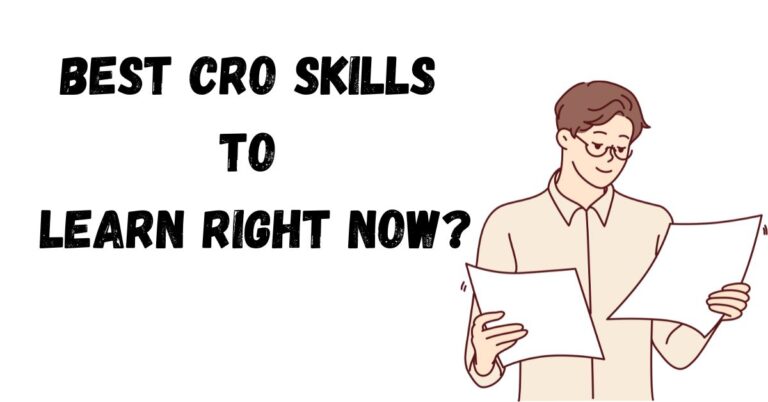Social Media Interview Questions + Answers in 2024
Getting ready for a social media job interview can feel a bit like gearing up for a big performance.
You’ve already done the hard work: your resume is polished, your portfolio is packed with your best campaigns, and you’ve even rehearsed answers to all the typical interview questions.
Now, it’s showtime!
This guide is all about turning that nervous energy into excitement, giving you practical tips to help you show off your skills and fit in with the company culture.
Whether you’re a seasoned pro or fairly new to the game, we’ve got you covered with insider advice to help you nail that interview.
What Questions Should I Expect in a Social Media Interview?
You’ll probably get questions about your past work with social media, how you track and understand different metrics, and any successful campaigns you’ve been a part of. They might also ask you about handling tough situations online, keeping up with the latest trends, and how you come up with new ideas for content.
To get a better understanding of the potential social media questions that might come up in your interview, review the list below:
1. What is social media marketing?
Employers ask about social media marketing to see if you understand its role in growing a business.
It’s about using platforms like Instagram or Twitter to promote products or services, engage with users, and meet business goals. You should discuss how to tailor content for different platforms, interact with users, and track success through analytics to refine marketing strategies.
Example Answer:
“Social media marketing leverages platforms such as Facebook, Instagram, and Twitter to build relationships and interact with potential and current customers.
By creating platform-specific content that resonates with our audience, we can enhance brand visibility, drive web traffic, and generate sales.
For instance, on Instagram, we focus on high-quality visuals and storytelling to captivate a younger demographic, while on LinkedIn, our content is more professional and business-oriented, targeting industry professionals.”
2. Can you name three popular social media platforms and explain their primary uses?
This question checks if you’re up-to-date with where different audiences spend their time online. Describe platforms like Facebook, Instagram, and LinkedIn, focusing on who uses them and for what purposes.
This shows you can match the right content and strategies to each platform based on their unique strengths and user demographics.
Example Answer:
“Facebook is a versatile tool ideal for ads due to its broad demographic reach and robust targeting options.
Instagram is key for engagement, favored for its visual appeal and high interaction rates among younger audiences. LinkedIn serves as a professional network where content is tailored for business interactions and networking.
Strategically using these platforms allows us to tailor our social media campaigns to reach diverse audiences effectively, enhancing our marketing impact.”
3. What are hashtags, and how do you use them effectively?
Interviewers ask this to see if you know how to increase content visibility and engage specific groups. Explain that hashtags help categorize posts, making them searchable, and are essential for tapping into existing conversations or trends relevant to your audience.
Example Answer:
“Hashtags are tools that help categorize content, making it easier for users to discover posts around specific themes or interests.
For effective use, I combine widely used hashtags for broader reach with more specific ones to target niche audiences.
For example, #ThrowbackThursday reaches a wide audience, while #EcoFriendlyLiving appeals to users interested in sustainability, allowing us to engage more deeply with this community.”
4. How do you schedule posts on social media platforms?
This question explores your organizational skills and familiarity with social media tools. Explain how scheduling helps manage posts across different time zones and maintain a consistent presence online, which is crucial for engagement.
Example Answer:
“I utilize tools like Buffer and Hootsuite for scheduling posts across various platforms to ensure consistent engagement.
For instance, analyzing audience activity allows us to schedule posts when engagement is highest.
This strategic scheduling enhances our visibility and interaction rates, providing a structured approach to our social media efforts and ensuring our content reaches the intended audience at optimal times.”
5. What is the importance of a social media calendar?
This query tests your ability to plan and your understanding of content strategy.
A social media calendar helps plan out posts in advance, ensuring a diverse mix of content that aligns with business goals and keeps your audience engaged.
Example Answer:
“A social media calendar is pivotal for planning and organizing content effectively.
It ensures that we distribute our messaging evenly and aligns our posts with key marketing campaigns and events.
For example, by scheduling content related to specific promotions or events ahead of time, we can prepare accompanying campaigns to maximize engagement and impact, ensuring our messaging is timely and relevant.”
6. How can a business benefit from using social media?
This question helps interviewers understand if you can leverage social media to support business goals.
Explain that social media can enhance brand visibility, improve customer engagement, and drive sales. It’s also vital for gathering customer insights and fostering strong customer relationships through direct communication.
Example Answer:
“Social media offers numerous benefits to businesses, including increased brand awareness and engagement, which are crucial for building customer loyalty and driving sales.
For instance, by using targeted ads on Facebook, a business can reach a specific demographic, track the effectiveness of these ads, and adjust strategies in real-time to optimize ROI.
Additionally, platforms like Twitter and Instagram provide invaluable channels for direct customer interaction and feedback, allowing businesses to quickly address concerns and foster a positive brand image.”
7. What does “engagement” mean in the context of social media?
Interviewers ask this to gauge your understanding of key social media metrics.
Define engagement as interactions such as likes, comments, shares, and retweets, which indicate that the audience is not just viewing but interacting with the content.
Highlight its importance as a measure of content’s effectiveness and an indicator of audience interest.
Example Answer:
“In the context of social media, engagement refers to the active interactions between users and content, including likes, comments, shares, and views.
High engagement rates are often indicative of content that resonates well with the audience, reflecting its relevance and impact.
For example, a highly engaged post on LinkedIn, demonstrated through numerous shares and comments, typically means the content is valuable to professionals within the industry, thereby enhancing brand credibility and authority.”
8. How would you handle a basic customer inquiry on social media?
This question tests your customer service skills and responsiveness in a digital environment.
Discuss the importance of timely and polite responses, personalization, and providing accurate information or directing the customer to the right resources.
Example Answer:
“When handling customer inquiries on social media, I ensure responses are prompt and personalized, which helps in building customer trust and satisfaction.
For instance, if a customer asks about a product feature on Facebook, I would respond with specific details about the feature, perhaps link to a video demonstration, and offer to assist further if needed.
This approach not only addresses the customer’s query effectively but also enhances their experience with the brand.”
9. What are some common social media marketing tools you are familiar with?
The question assesses your proficiency with tools that streamline social media management.
Discuss various tools like Hootsuite, Buffer, and Sprout Social, focusing on their functionalities such as scheduling, analytics, and engagement tracking.
Example Answer:
“I am proficient with several social media marketing tools that enhance our efficiency and effectiveness.
For example, I use Hootsuite for scheduling posts across multiple platforms, which ensures consistent content delivery. Buffer is great for planning and analytics, helping us understand post performance and audience engagement.
Additionally, I use BuzzSumo to identify trending content within the industry, which informs our content strategy and helps keep our content relevant and engaging.”
10. How do you measure the success of a social media post?
This question explores your ability to use data to evaluate social media performance.
Discuss metrics like reach, engagement rate, conversions, and shares. Explain how these metrics can inform future content strategies and business decisions.
Example Answer:
“The success of a social media post can be measured through a variety of metrics, including engagement rate, reach, and conversion.
For instance, I track the number of likes, comments, and shares to gauge audience interaction. I also look at the reach to understand how far the post has traveled beyond the immediate followers, and conversions to see if it’s meeting specific business objectives.
This data helps refine our content strategy, ensuring that we are not only reaching a large audience but engaging them in meaningful ways that contribute to our business goals.”
11. How do you create a social media strategy for a new brand?
Creating a social media strategy involves understanding the brand’s goals, target audience, and the unique value it offers.
Start by defining clear objectives, such as increasing brand awareness or driving sales. Segment your audience and tailor content to meet their preferences and needs.
Choose the right platforms based on where your target audience is most active and outline a content calendar that includes varied content types.
Example Answer:
“When developing a social media strategy for a new brand, I first establish clear, measurable goals aligned with the brand’s overall marketing objectives.
For example, if the goal is to increase brand awareness, I focus on creating shareable, visually appealing content that resonates with the target audience’s interests and encourages engagement.
I use tools like audience insights on Facebook and Instagram to better understand demographic and psychographic data, which informs the content creation process and helps in choosing the right platforms.
Consistent monitoring and analytics are essential to adapt the strategy based on audience response and engagement levels.”
12. Describe a successful social media campaign you managed. What made it successful?
This question allows you to showcase your strategic thinking and ability to execute a campaign effectively.
Highlight your planning process, creative content implementation, and how you measured success. Focus on a specific campaign, detailing the objectives, the strategies you employed, and the results achieved.
Example Answer:
“I managed a campaign focused on promoting a new product launch, which was highly successful due to strategic planning and execution.
The key was a teaser video that sparked interest and anticipation, followed by a series of influencer collaborations to widen reach. We used targeted ads to drive traffic to our website. The campaign resulted in a 50% increase in website traffic and a 30% uptick in sales compared to previous launches.
Success was measured by engagement rates, traffic data, and sales figures, all of which surpassed our initial goals.”
13. How do you decide what content to post on each social media platform?
This question tests your ability to tailor content to different platforms based on their unique features and the preferences of their user bases.
Discuss how you evaluate the strengths and audience of each platform to decide the type of content that would perform best, from images and videos to long-form articles.
Example Answer:
“Determining what content to post on each platform involves understanding the platform’s primary user base and the types of content that perform well.
For instance, on Instagram, high-quality visuals and short videos work best due to its visual nature. On LinkedIn, professional articles and company news resonate with the business-oriented audience. On Twitter, timely, engaging tweets and hashtags effectively tap into real-time events and conversations.
This strategic content alignment ensures maximum engagement and relevance.”
14. What is your approach to managing multiple social media accounts simultaneously?
Handling multiple accounts requires strong organizational skills and strategic use of tools.
Explain how you use social media management tools to schedule posts, monitor engagement, and keep track of all account activities.
Discuss the importance of maintaining a consistent brand voice across all platforms.
Example Answer:
“My approach involves using comprehensive tools like Hootsuite or Buffer to manage multiple accounts efficiently.
These tools allow for scheduling posts, tracking interactions, and responding to comments or messages. I maintain a content calendar to plan and ensure consistency in posting schedules and content themes.
Regular audits and analytics help keep the strategy aligned with the brand’s goals and audience preferences, ensuring each platform’s content remains fresh and engaging.”
15. How do you respond to negative comments or a brand reputation crisis on social media?
This question assesses your crisis management skills. Discuss the importance of responding promptly and professionally to maintain the brand’s reputation.
Outline a step-by-step approach, including monitoring comments, addressing the issue transparently, and taking the conversation offline if necessary.
Example Answer:
“In situations involving negative feedback, my first step is to respond quickly and empathetically, acknowledging the customer’s concerns.
I aim to resolve the issue transparently and publicly when appropriate, demonstrating the brand’s commitment to customer satisfaction. For more complex issues, I invite the customer to continue the conversation via a private channel such as email or direct message.
This approach helps mitigate the situation and often converts unhappy customers into brand advocates by showing that we value their feedback and are committed to resolving their issues.”
16. How does social media support SEO and SEM initiatives?
Social media can significantly enhance SEO and SEM efforts by increasing brand visibility and traffic to your website.
Explain how social signals from shares, likes, and comments can indirectly affect SEO rankings by driving more organic traffic.
For SEM, discuss how social media can be used for retargeting ads to engage users who have shown interest in your content or products.
Example Answer:
“Social media supports SEO by driving traffic to content and increasing engagement, which are signals search engines use to gauge the quality and relevance of a site.
Sharing content on social media can lead to more inbound links, as people discover and link to it.
For SEM, social media platforms provide powerful tools to retarget audiences with ads based on their interactions with your website, enhancing the effectiveness of paid search efforts.
For instance, using Facebook’s Pixel, we can show targeted ads to users who visited specific pages, which increases conversion rates.”
17. What metrics would you track to assess the ROI of a social media campaign?
This question aims to uncover your ability to use data to evaluate and report on the effectiveness of social media activities.
Highlight key metrics such as engagement rate, reach, clicks, conversion rates, and cost per action.
Explain how these metrics help determine the financial return on investment and inform future strategy adjustments.
Example Answer:
“To assess the ROI of a social media campaign, I track a variety of metrics based on the specific goals of the campaign.
For example, if the goal is brand awareness, I measure reach and engagement rates. For lead generation, I track click-through rates and conversion rates. Additionally, I calculate the cost per lead and cost per conversion to understand the financial effectiveness of the campaign.
By analyzing these metrics, I can make data-driven decisions to optimize the strategy and improve ROI.”
18. How do you use social media for lead generation?
Discuss how social media can be strategically used to generate leads by promoting gated content, using lead generation ads, and engaging with potential customers.
Explain how targeted content can attract the right audience and convert them into leads through calls-to-action and special offers.
Example Answer:
“Social media is a powerful tool for lead generation by offering valuable content that requires users to submit contact information.
For example, I might use Facebook lead generation ads that offer a free ebook or a webinar registration in exchange for an email address.
Additionally, I engage directly with potential customers by responding to their inquiries and comments, guiding them to our website where they can learn more about our services or sign up for a newsletter, effectively turning engagement into leads.”
19. What role does influencer marketing play in social media strategy?
Influencer marketing is pivotal for amplifying brand messages and reaching new audiences.
Discuss how influencers can lend credibility and how their endorsement can drive awareness and conversions. Explain the importance of choosing influencers whose followers align with the brand’s target demographic.
Example Answer:
“Influencer marketing plays a crucial role in extending the reach and credibility of our social media strategy.
By partnering with influencers who have established trust with their audience, we can tap into their followers and introduce our brand in a positive and organic way.
For instance, collaborating with a well-known fitness influencer to promote our health supplements can lead to increased brand recognition and direct sales, as their endorsement serves as a powerful testimonial to their engaged followers.”
20. How do you ensure content is aligned with the brand’s voice and goals?
This question tests your ability to maintain brand consistency across all marketing channels. Discuss the importance of having a clear brand voice and content guidelines.
Explain how regular audits and collaborations with the marketing team ensure that all content reflects the brand’s ethos and meets strategic goals.
Example Answer:
“To ensure content alignment with the brand’s voice and goals, I start by developing a detailed style guide that outlines our brand voice, tone, and the type of language we use.
This guide is shared with all content creators to maintain consistency. Additionally, I collaborate closely with the marketing and product teams to ensure that all content supports our current campaigns and business objectives.
Regular reviews and feedback sessions help us keep the content aligned and make necessary adjustments to our strategy.”
21. How do you align social media strategies with overall business objectives?
Aligning social media strategies with business objectives is crucial for ensuring that your efforts contribute directly to the company’s goals.
Discuss how you start by understanding the company’s overall objectives, whether they are brand awareness, customer retention, or sales-oriented.
Explain how you translate these objectives into actionable social media goals that are specific, measurable, achievable, relevant, and time-bound (SMART).
Example Answer:
“To align social media strategies with business objectives, I first collaborate with key stakeholders to understand the overarching goals of the company.
For instance, if the goal is to increase sales, I focus on campaigns that drive traffic to e-commerce sites and track conversion rates.
I use social media analytics to measure the effectiveness of these campaigns and adjust strategies to optimize performance, ensuring that our social media efforts are not only aligned but also contributing positively to the company’s bottom line.”
22. Can you describe a time when you had to pivot a social media strategy quickly? What was the situation, and what did you do?
This question explores your adaptability and problem-solving skills. Share a specific instance where external factors or initial results required a swift change in strategy.
Highlight your decision-making process, how you assessed the situation, and the outcomes of your actions.
Example Answer:
“During a product launch, initial feedback on social media was not as positive as anticipated, which threatened to affect the overall success of the launch.
I quickly gathered the team to reassess our approach, focusing on customer concerns highlighted in comments and reviews. We adjusted our messaging to address these concerns directly and used targeted ads to amplify this new message.
As a result, we saw a significant improvement in sentiment and engagement, which helped turn around the narrative and made the campaign successful.”
23. How do you manage and optimize paid social media campaigns?
Discuss your approach to planning, executing, and monitoring paid campaigns. Explain how you use targeting options, budget adjustments, and A/B testing to refine ads and improve ROI.
Emphasize the importance of analytics in making data-driven decisions to optimize campaign performance.
Example Answer:
“To manage and optimize paid social media campaigns, I start with clear targeting, setting parameters based on demographics, interests, and behaviors that align with our audience profile.
I allocate budgets based on campaign goals and continuously monitor performance metrics like click-through rates and conversion rates. Regular A/B testing of ad elements like images, headlines, and calls to action helps identify the most effective combinations.
By analyzing these data points, I can continuously refine our approach to maximize ROI.”
24. What strategies do you use to foster an online community?
Building an online community is about more than just posting content; it’s about fostering engagement and loyalty.
Discuss strategies such as regular interaction with followers, creating community-driven content, and encouraging user-generated content.
Highlight how these strategies help build a sense of belonging among members.
Example Answer:
“To foster an online community, I focus on engagement by responding promptly to comments, questions, and feedback.
I also encourage the sharing of user-generated content, which not only enhances engagement but also makes members feel valued and heard.
Hosting live sessions and Q&As with community members or subject matter experts further nurtures this community feeling, creating a dynamic space where users feel connected to the brand and each other.”
25. What is your approach to global social media management for a multinational brand?
Managing social media for a multinational brand involves understanding diverse cultural nuances and legal considerations.
Discuss how you tailor content to different regions, coordinate across time zones, and ensure consistent messaging that respects local customs and languages.
Example Answer:
“For global social media management, I emphasize localization while maintaining a cohesive brand voice.
This involves working closely with local marketing teams to adapt content and campaigns that resonate with regional audiences.
For instance, we create region-specific versions of our campaigns that reflect local languages, cultural nuances, and legal requirements. I also use scheduling tools to ensure that posts go live at optimal times for different regions, enhancing engagement and ensuring a consistent global presence.”
26. How do you evaluate and integrate emerging social media platforms into an existing strategy?
This question tests your ability to stay current with trends and strategically incorporate new tools that can benefit the brand.
Discuss how you assess the relevance of new platforms based on target audience alignment and potential ROI.
Explain the process of small-scale testing to evaluate platform effectiveness before full integration.
Example Answer:
“When considering new social media platforms, I start by researching the platform’s user demographics and core features to ensure alignment with our target audience.
For example, when TikTok first emerged, I recognized its rapid growth among younger audiences. We conducted a pilot campaign targeting this demographic, which involved creative, short-form video content.
After monitoring engagement levels and cost-effectiveness, we fully integrated TikTok into our broader social media strategy, tailoring content to leverage the platform’s unique viral potential.”
27. Discuss a time when a social media campaign did not meet your expectations. What did you learn, and how did you adjust?
This question allows you to demonstrate your problem-solving skills and ability to learn from failures.
Describe a specific instance where a campaign underperformed, the insights you gained from analyzing the outcomes, and the strategic adjustments made to improve future campaigns.
Example Answer:
“In a previous campaign aimed at driving webinar registrations, we noticed lower than expected engagement rates.
Upon reviewing the analytics, we found that our messaging wasn’t resonating with our target audience, and the call-to-action was unclear. We learned the importance of A/B testing campaign messages before fully launching.
For the next campaign, we tested multiple ad copies and visuals, which helped us identify more compelling content, resulting in a 40% increase in engagement and registrations.”
28. How do you handle conflicts between different departments regarding social media priorities?
Handling interdepartmental conflicts is crucial for a cohesive digital strategy.
Discuss how you facilitate communication and collaboration between teams to ensure that social media initiatives support broader company objectives while balancing department-specific goals.
Example Answer:
“When conflicts arise, such as between sales wanting more promotional content and customer service needing more educational content, I arrange a meeting to discuss and align on priorities that support our overall business goals.
We use data to show the impact of various types of content on different business objectives, helping to create a balanced content strategy that addresses both immediate sales goals and long-term customer engagement.”
29. What advanced analytics tools have you used, and how do you translate that data into actionable strategies?
This question assesses your technical proficiency and strategic thinking.
Discuss the analytics tools you are proficient in, such as Google Analytics, Facebook Insights, or more specialized software like Tableau or Adobe Analytics.
Explain how you use the data from these tools to inform decisions and optimize social media campaigns.
Example Answer:
“I have utilized tools like Google Analytics and Sprout Social to track user engagement and campaign performance.
By analyzing data such as user behavior, conversion rates, and social interactions, I identify patterns and trends that inform our content strategy.
For instance, higher engagement on video posts led us to double down on video content, significantly increasing our reach and engagement metrics.”
30. How do you mentor or train junior social media team members?
This question explores your leadership skills and ability to disseminate knowledge within a team.
Highlight your approach to training, such as hands-on projects, regular feedback sessions, and providing resources for learning best practices in social media management.
Example Answer:
“I believe in a hands-on approach for training junior team members. I start with a comprehensive orientation on our social media strategy and tools.
Regularly, I assign them small projects with incremental responsibilities, accompanied by feedback sessions to discuss their progress and areas for improvement.
Additionally, I encourage them to stay updated with the latest social media trends and tools through webinars and industry blogs, fostering continuous learning and professional development.”
How to Prepare for a Social Media Interview
Preparing for a social media interview requires a strategic approach to demonstrate both your expertise and your compatibility with the company’s culture and goals. Here are the top five tips to help you stand out:
Understand the Company’s Social Media Presence
Start by diving deep into the company’s social media pages. Look at what they’re doing well and think about what could be better. Sharing these insights during your interview not only shows you’ve done your homework but also that you’re keen and ready to contribute.
Know the Platforms
Make sure you know which social media platforms the company uses and understand why they use them. This could depend on whether they’re selling directly to other businesses (B2B) or directly to consumers (B2C). Showing that you know how to tailor your skills to fit the company’s specific needs can really make you stand out.
Practice Your Responses
Interviews can sometimes throw curveballs, especially when they ask how you’d handle certain situations, like a PR crisis or creating engaging content. Practice out loud to make sure you can deliver your answers smoothly and confidently when it counts.
Demonstrate Your Analytical Skills
Be ready to talk numbers. Discuss how you’ve used tools like Google Analytics or Hootsuite in the past to track and improve your social media campaigns. Showing that you can interpret data and turn it into a solid strategy is a big plus.
Showcase Your Adaptability
Social media is always changing, so be prepared to discuss times you’ve had to switch up your strategy quickly—maybe in response to an algorithm change or a new trend. Examples of how you’ve successfully navigated these changes can highlight your flexibility and problem-solving skills.
Conclusion
Here at JRW, we provide insights into the questions that might be asked during your interview.
If you want to read more from us, consider checking out our blog section where we also cover topics like ‘Copywriter Interview Questions,’ ‘Content Marketing Interview Questions,’ and more.
Visit our Interview Questions section for a wide range of topics similar to this one but for different positions!
In conclusion, preparing for a Social Media Marketing (SMM) interview can be daunting. The questions may vary, and the outcome will depend on both you and the interviewer. The best approach is to be well-prepared, confident, and ready to answer questions with ease.
We hope this article has been helpful, and we look forward to seeing you in our next post.
Take care!
FAQs
What are some common mistakes made in social media interviews?
A big no-no is not being up-to-date with the company’s social media efforts or showing up with a disorganized personal online presence. Failing to provide specific examples of your work or not having measurable results to share can also set you back. Always come prepared with thoughtful questions about their social media strategy, and avoid showing any lack of knowledge about the latest trends and tools in the industry.
What should I wear to a social media interview?
Dressing right for a social media interview means matching the vibe of the company you’re hoping to join. If it’s a traditional corporate setting, you might lean towards more formal attire like a suit. For a tech startup or a creative agency, you could go with something smart but casual. The key is to look polished and professional, showing that you’re taking the interview seriously while also fitting into their culture.
How can I showcase my personal social media presence during the interview?
Definitely be ready to talk about your social media profiles! Share how you interact with your followers and the strategies you’ve used to grow your networks. It’s crucial that your profiles look professional and speak to the skills you can bring to the job. A quick review before your interview to make sure everything is tidy and aligns with your professional persona is a smart move.
How should I respond to questions about weaknesses or challenges in social media?
It’s best to keep it real—acknowledge your weak spots but also chat about how you’re improving these areas. For example, if keeping up with the newest tech tools is tough, share what you’re doing to get better, like following certain blogs or taking specific courses.
What are good questions to ask at the end of a social media interview?
Show you’re really into the role and the company’s future. Maybe ask about what social media goals they have, how they figure out if they’re hitting those goals, or what kind of projects you might jump on. Asking about the team vibe or the tools they use can also give you a clearer picture.






![30 Content Marketing Interview Questions + Answers [2024]](https://www.juanremotework.com/wp-content/uploads/2024/08/a-perosn-being-interviewed-by-a-male-hiring-manager-768x402.jpg)
